Jews in Italy, from emancipation to fascism
Jewish presence on Italy’s territory is very ancient, over two thousand years. The Jews obtained equal rights during the Risorgimento. At the beginning of the twentieth century, there were about 45,000, namely one per cent of Italy’s population, a small percentage compared to many other areas in Europe. After emancipation in the nineteenth century, Jews became integrated as individuals into Italian society and brought about massive internal migration. They progressively abandoned their small local communities in favour of larger cities, mostly in central and northern Italy, which offered more employment opportunities. Thanks to a high literacy rate, in many cases Italian Jews reached high positions in the public sector, liberal professions, insurance, banking, commerce, and teaching, while very few were employed in the agricultural sector. Their contribution to the cultural and scientific development of the country was significant. However, they were very evident in street trade, especially in Rome, Livorno and partially in Trieste; many of these street vendors lived in poverty.
The First World War saw the active and patriotic participation of both the secular and the religious components of Italian Hebraism.
Secularization, which was taking place in the Italian society, also strongly affected the Jewish communities, whose members showed a clear tendency to assimilation (during the 1930s the rate of mixed marriages exceeded 30%; in Trieste it even reached 50%). However, as in the rest of Europe, others decided to join the Zionist movement.
At the beginning of the 1930s, many foreign Jews -mainly those who were persecuted by the Nazi regime -found refuge in Italy. Although they arrived with the intention to continue on to overseas destinations, or to Palestine, many decided to stay in Italy, especially in Lombardy and in the eastern regions, where part of the population still spoke German.
In the Dodecanese, which became an Italian possession after the Italo-Turkish war, of the approximately 5000 Sephardi Jews living on the island of Rhodes and who had co-existed with the Muslim population and Orthodox Christians for centuries under the Ottoman Empire, the majority decided to adopt Italian citizenship. During the 1930s, due to the poor economic situation of the island, many of them emigrated to Africa and America in search of work, thereby halving the number of community members.
A massive number of Jews also lived in the Italian colonies, and in particular in Libya, alongside the Arab population.
According to a census from 1936, there were 28,191 Libyan Jews and most of them lived in the province of Tripoli. In 1939 the number increased to 30,387, with the addition of 510 Italian Jews, 1260 French Jews, 310 English Jews and 80 Jews of other nationalities living in Tripoli itself.
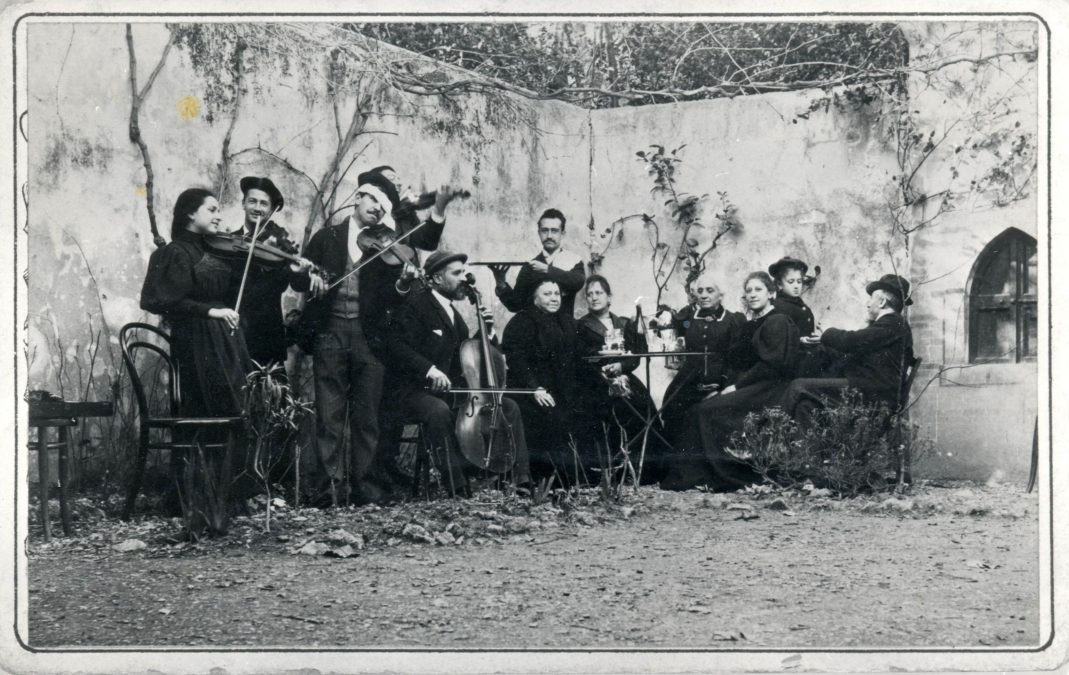
00 Concerto
Livorno, 1895. A concert held by the Tabet-Belimbau family. From the left, Matilde Carmi, Aldo Mieli, Gigi and Dario Carmi, Puccianti (standing), Fortunata Belimbau (front), Sisa Belimbau Carmi, Clementina Carmi, Clementina Belimbau Tabet, Sisa Tabet later Lopez,...
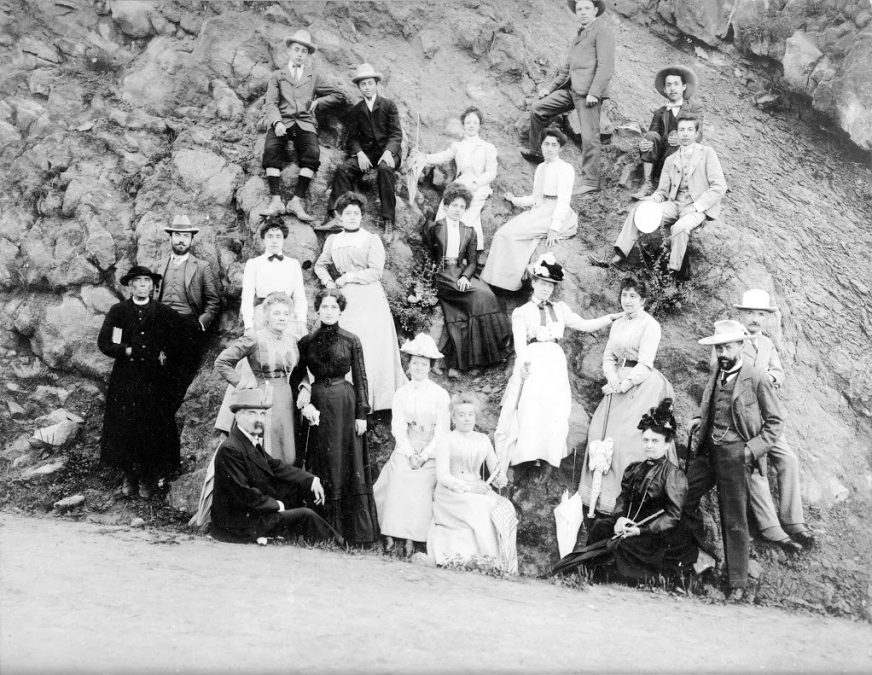
01 Braccati
Montese (Modena), 1902. Mathematician Salvatore Pincherle (1853-1936), a Jew from Trieste (bearded, standing in the foreground), during an excursion on the hills of Modena with the family of physicist Augusto Righi (the photographer), fellow lecturer at the University...
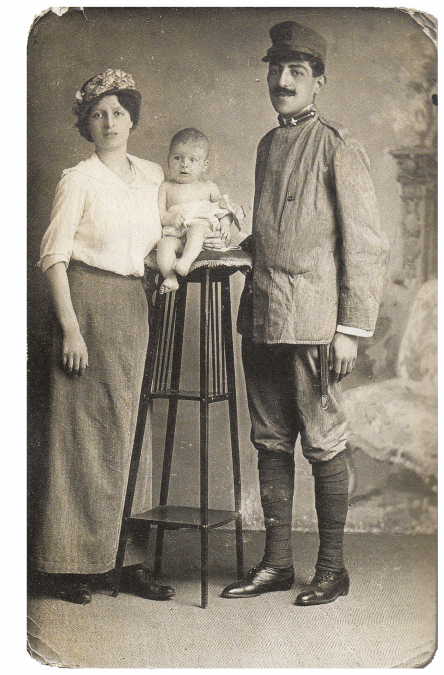
02 AP Nedo Fiano
Florence, August 1915. Nella Castiglioni (1890-1944) and Olderigo Fiano (1889-1944) with their second son Enzo (1917-1944). All three would be deported and killed at Auschwitz. Nedo Fiano’s Private Archive, Milano
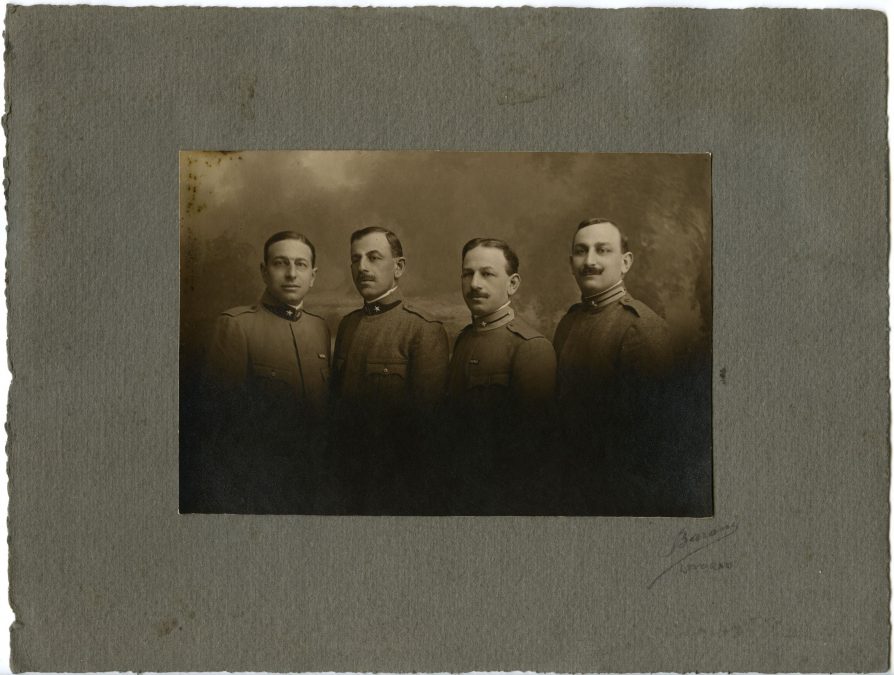
02bis Livorno
Livorno, circa 1915. Joseph, Charles, Arturo, and Hugo Salama, four volunteer brothers at the front. Fondazione Centro di Documentazione Ebraica Contemporanea, Milano
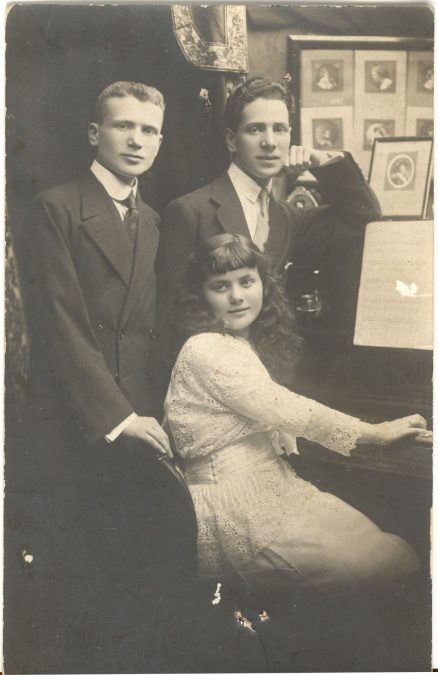
03 Torino
Turin, 1913. Nuta (Benvenuta) Luzzati (1901-1989) at the piano with her brothers Giulio (1898-1975) and Aldo (1896-1965), probably on the occasion of her Bat mitzvah. Fondazione Centro di Documentazione Ebraica Contemporanea, Milano
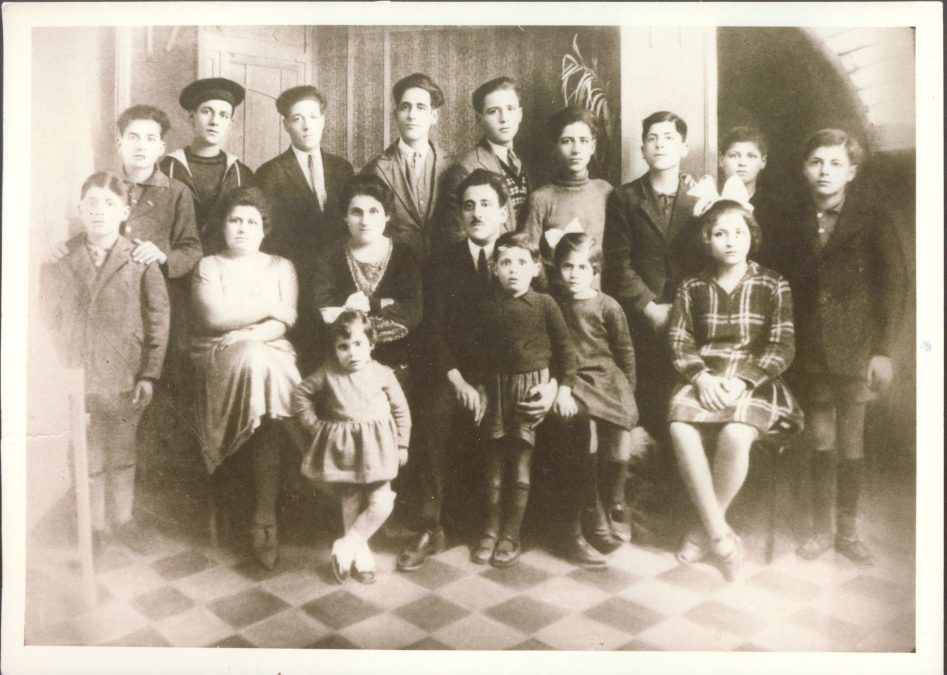
04 Famiglia Coen Ancona
Ancona, circa 1926. The Coen family. Standing, from the left: Umberto (1914-1945, deported to Auschwitz), Brenno, Bruno, Attilio, Aldo, Manfredo, Nello, Dante (1910-1945, deported to Auschwitz), Franco, and Remo Coen. Seated, from the left: Romilde Coen (1902-1944,...
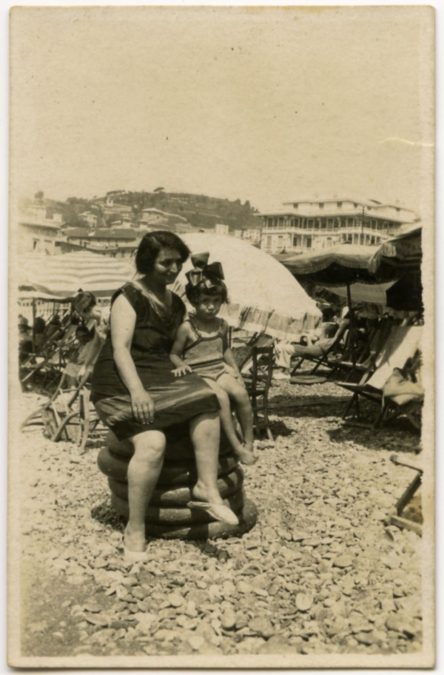
05 Genova
Pegli (Genoa), 1925-1926. Greca Nella Finzi married Morais (1898-1943) and her daughter Giorgina (1922-1943). Both were deported to Auschwitz. Giorgina, who in turn had become a mother, was probably killed upon arrival together with little Franco David Luisada....
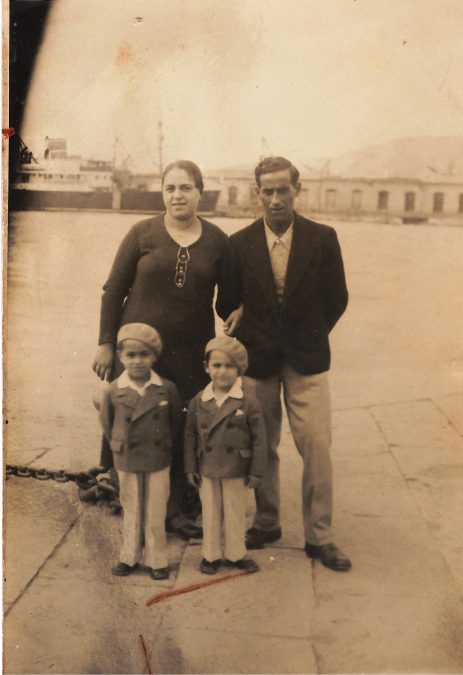
06 JB-Fam.Belleli
Trieste, early 1930s. Bellina Osmo (born in 1907) and Yakò Belleli (born in 1901), Jews from Corfù living in Trieste, with their children Rino (Piero, born in 1930) and Lele (Raffaele, born in 1931). Yakò worked as a packer at a tobacco factory. As a Jewish Greek, he...
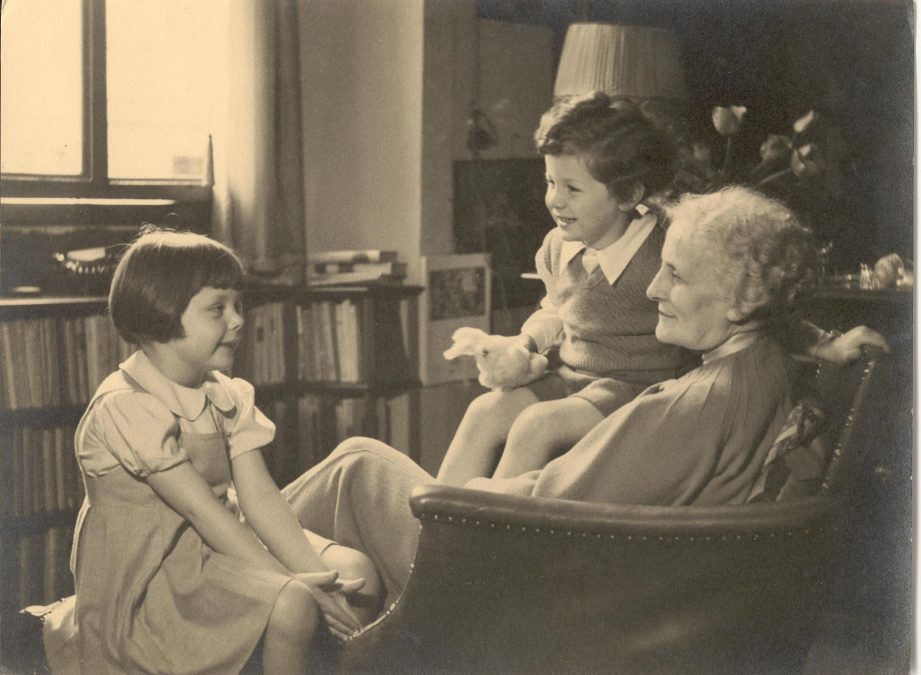
07 FIrenze 1935
Florence, 1935. Amelia Pincherle (1870-1954), mother of Carlo and Nello Rosselli, is telling a fairy tale to her grandchildren Amelia and Andrea. Fondazione Centro di Documentazione Ebraica Contemporanea, Milano
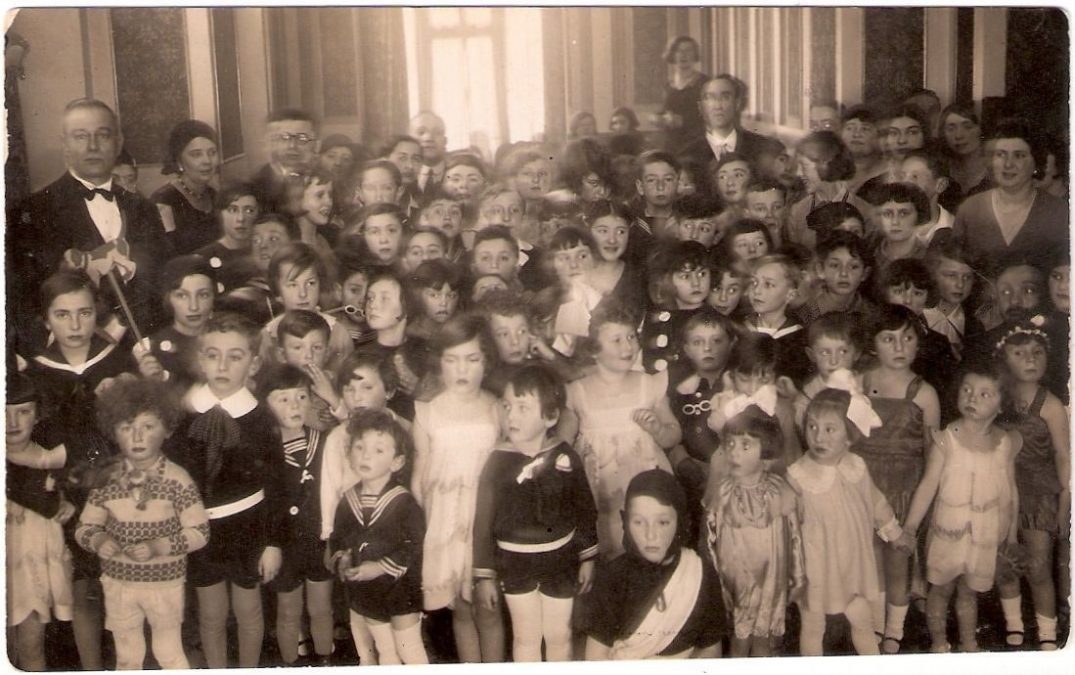
08 Fiume
Fiume, 1930. Purim celebrations. Among the children are the survivors of Auschwitz Martino Godelli (1922-2014), Gisella Kugler (1921-2007) and Elena Hanna Kugler (1928-2017). Fondazione Centro di Documentazione Ebraica Contemporanea, Milano
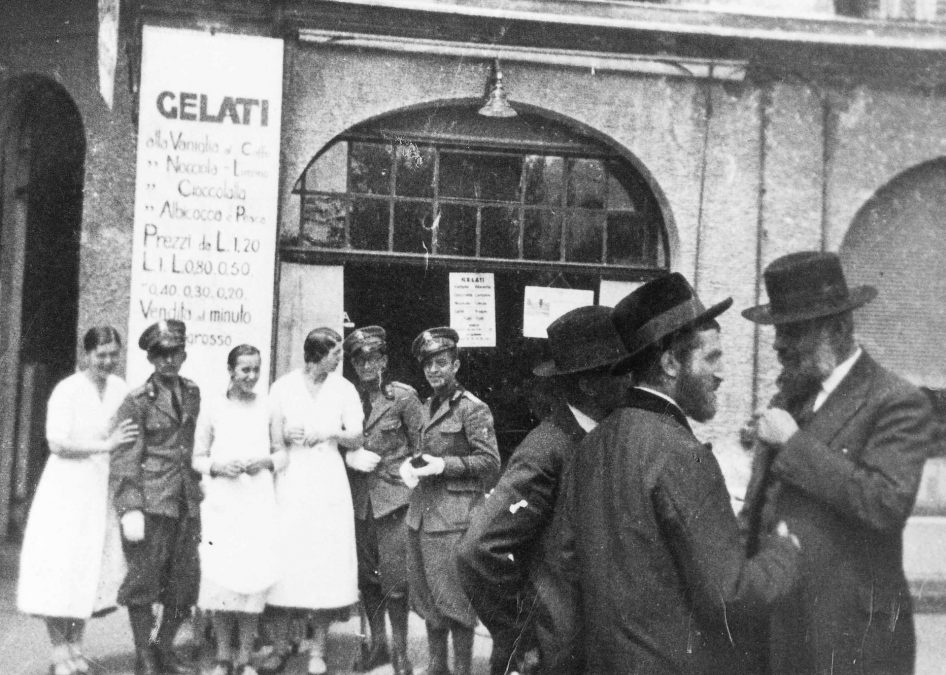
09 Merano
Merano, 1930s. Orthodox Jews on the Lungopassirio Promenade. Archive of the Comunità ebraica di Merano
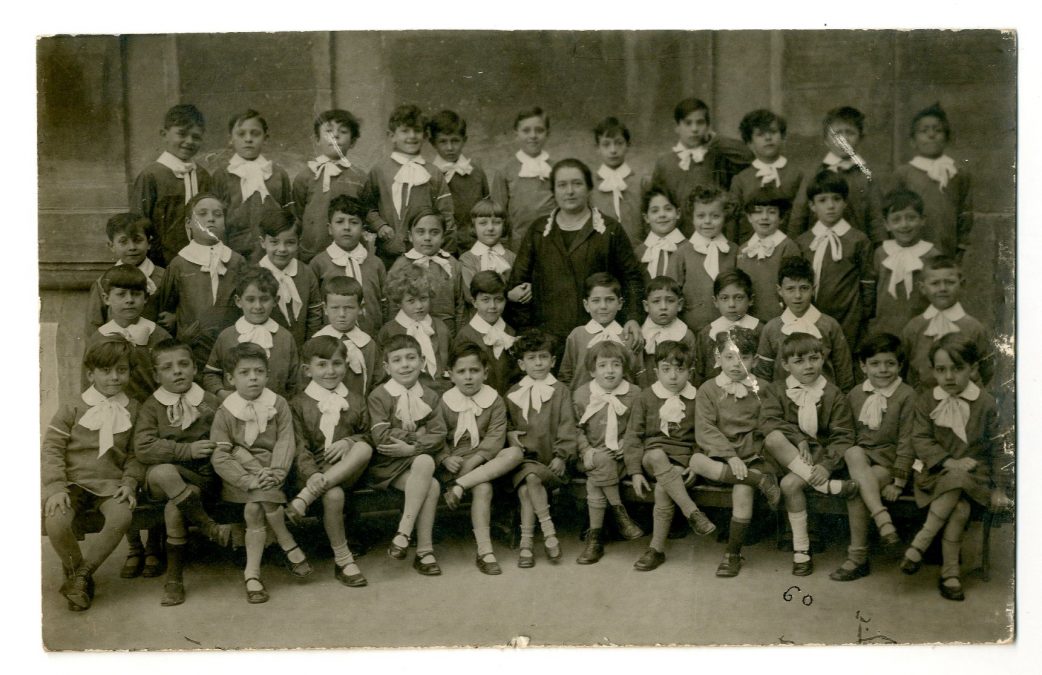
10 Roma
Rome, 1929. First grade class, state school ‘Lante Della Rovere’. The fifth child sitting, from the right, is Luciano Foà (1922-2009). Fondazione Museo della Shoah, Roma Fondo Carla Paola Della Seta
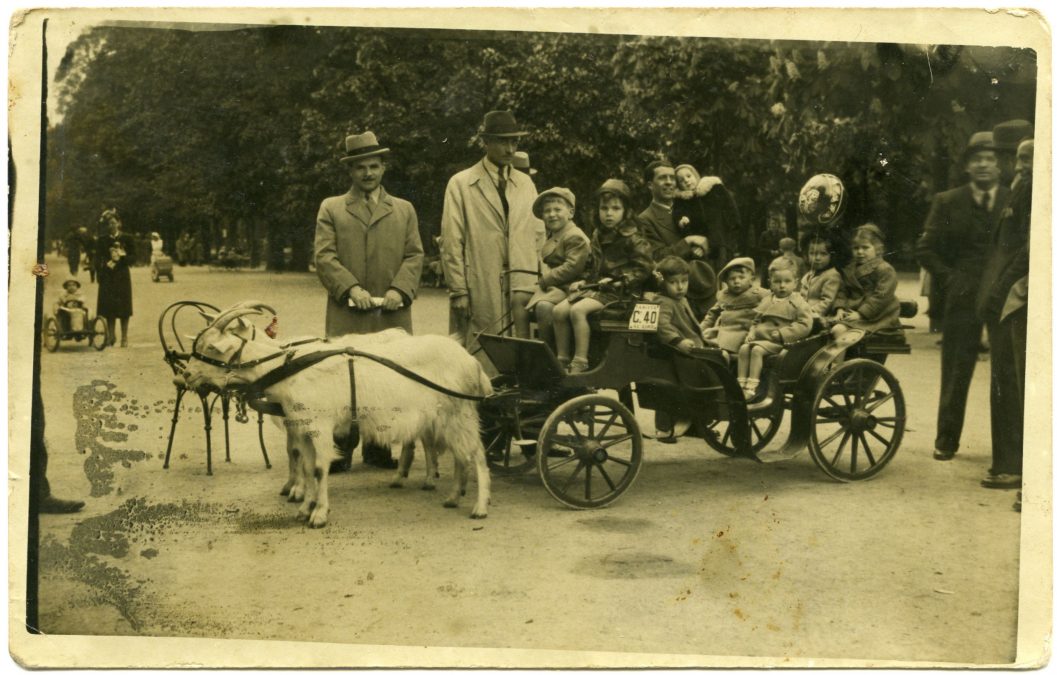
12 Milano 1937
Milan, 1937. Salomon Hauben and daughter Ruth with other children on a carriage drawn by goats in the public gardens of Porta Venezia. Fondazione Centro di Documentazione Ebraica Contemporanea, Milano
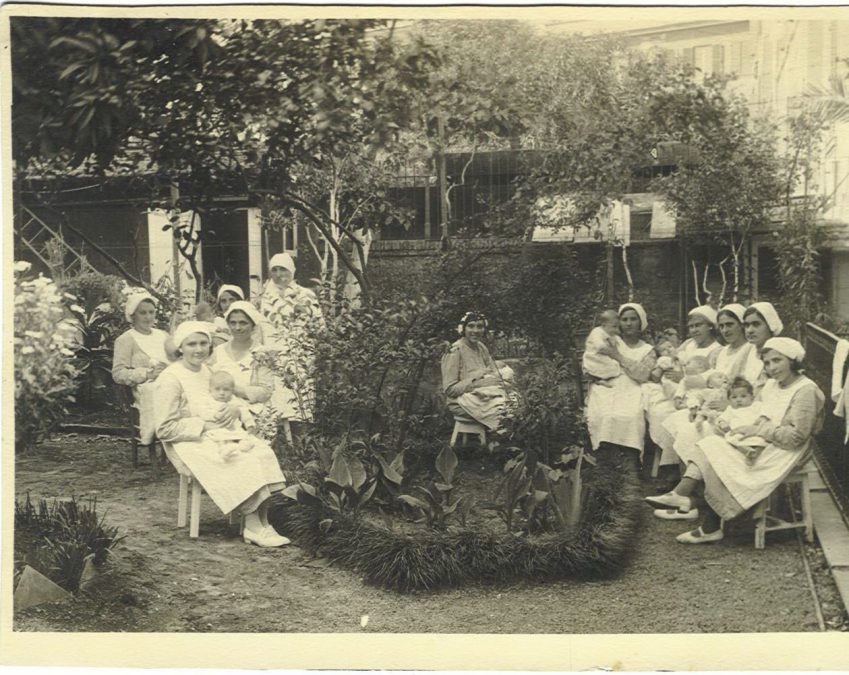
11 Roma Modigliani
Rome, circa 1920s. Wet nurses in the garden of the Maternal Assistance Institute, founded and directed by paediatrician Enrico Modigliani (1877-1931). Fondazione Centro di Documentazione Ebraica Contemporanea, Milano
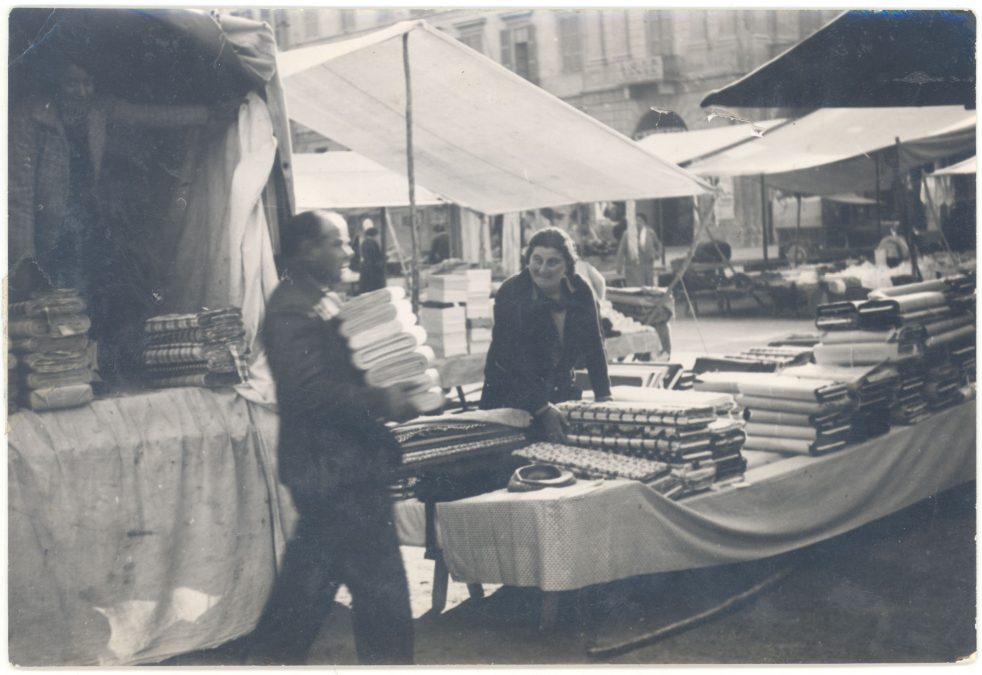
13 Cuneo mercato
Cuneo, 1940. Market in Piazza Galimberti (in front of the Court of Justice). Marco Elijah Levi (1893-1943) and Pia Clelia Levi (1899-1944) at work in their street stand. Marco died in Italy in the spring of 1943; his widow Pia would be killed at Auschwitz in 1944....
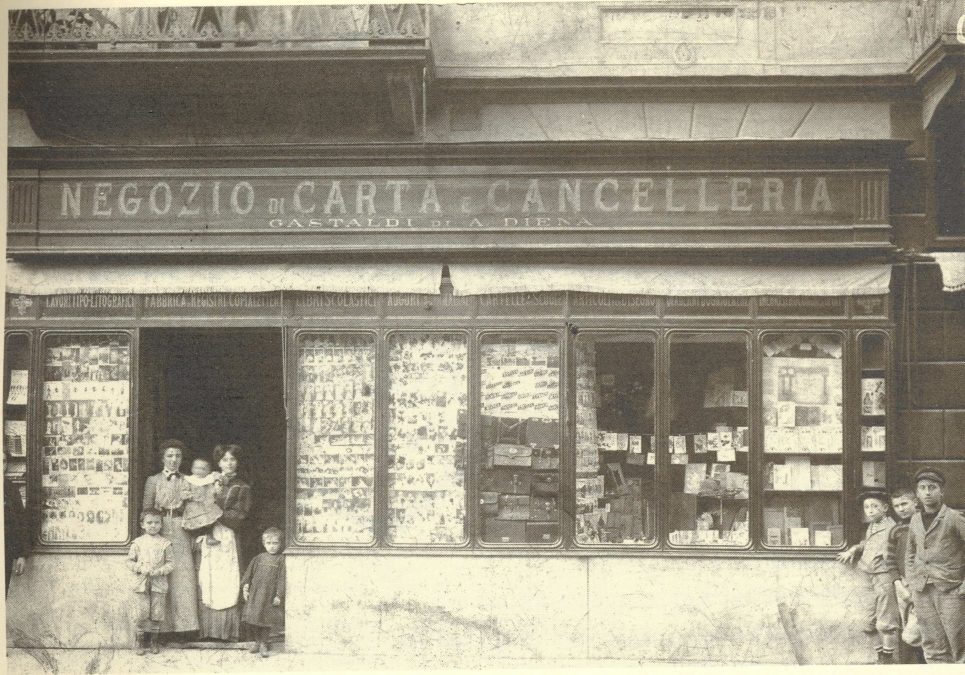
13bis Torino
Turin, 1908 approximately. Orsola Diena in front of her stationery store. Fondazione Centro di Documentazione Ebraica Contemporanea, Milano
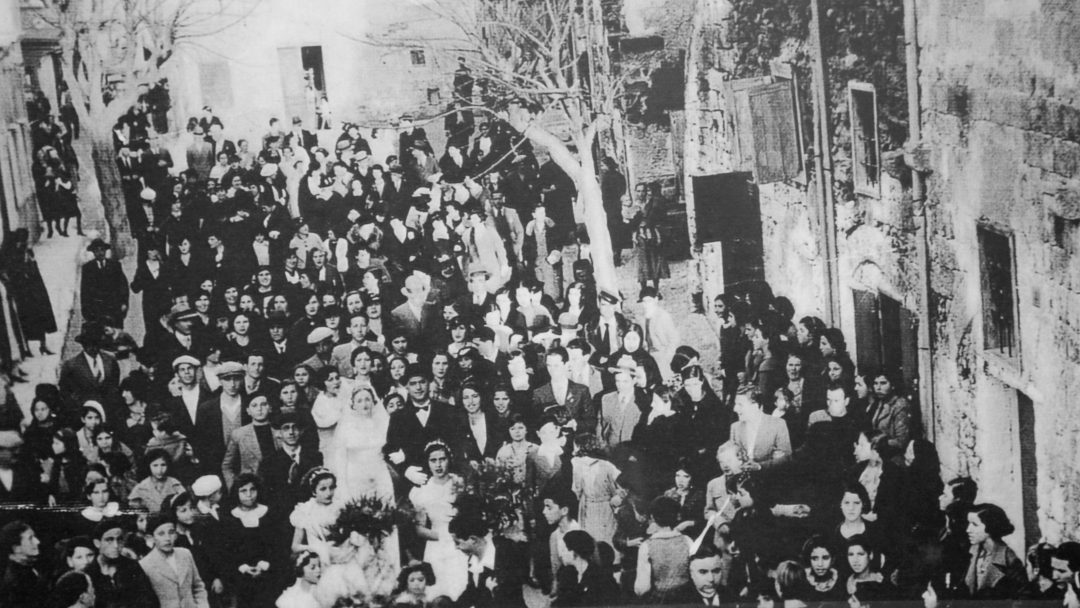
14 Rodi Matrimonio
Rhodes, La Calle Ancha, December 1935. Marriage of Daniel Behor Israel and Julia Hasson. Alberto Israel’s Private Archive, Bruxelles
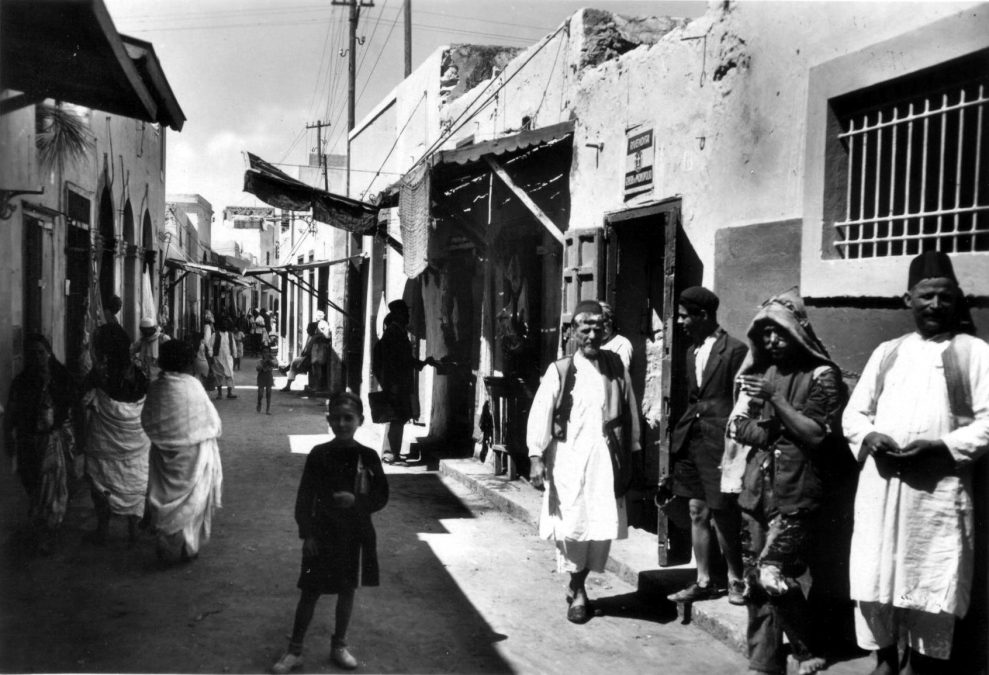
15 Tripoli
Tripoli (Libya). The Jewish ‘Hara el Kebira’ district in the old town. From the film Libia. L’ultimo esodo by Ruggero Gabbai and David Meghnagi (2017)
Browse through the chapters of the exhibition
Next chapter
Previous chapter
